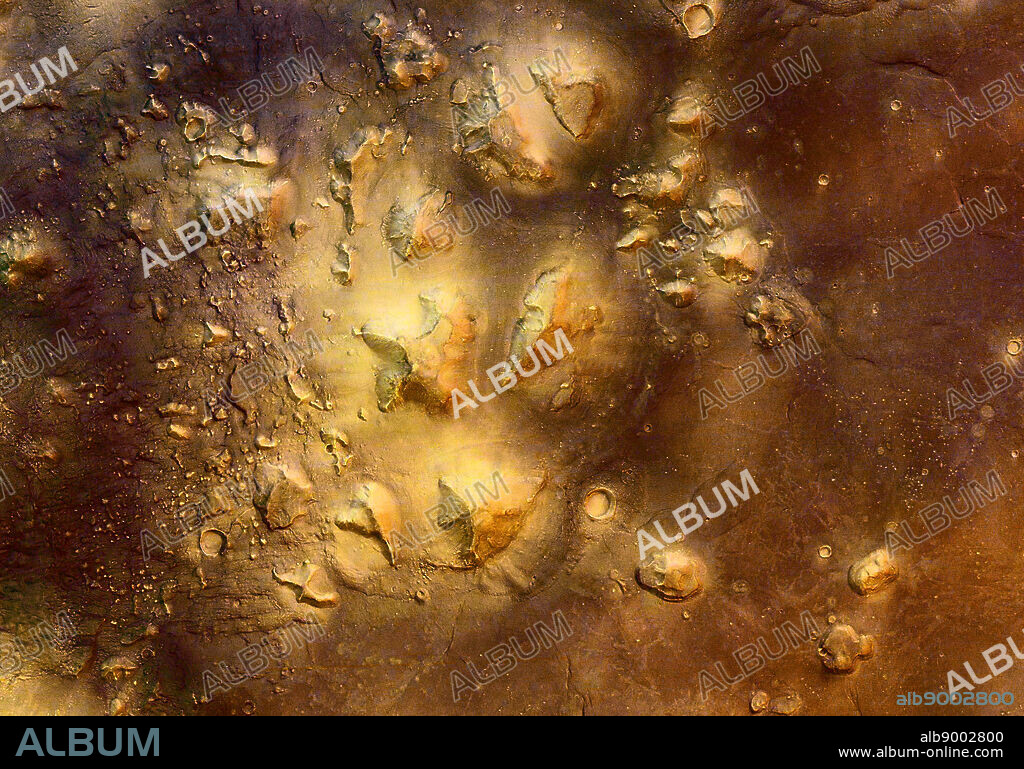alb9002800
stone mesas of the Cydonia region on Mars are quite striking in appearance. Last week, the Mars Express project released a new close-up image of a portion of the Cydonia region on Mars. This new image, taken by the robotic Mars Express spacecraft now orbiting Mars, shows an area about 90 kilometres wide. In the far lower right of the above image, a particularly picturesque mesa can be seen as the upper right of the two mesas visible there. This mesa, when lit from just the right sun angle, can appear similar to a human face and became famous as the Face on Mars in 1976 Viking orbiter images. Better images show it to be just an interesting mesa. Such complex looking landforms in the Cydonia region are thought to be the result of landslides and erosion of the ancient Martian crust.

|
Ajouter à une autre Lightbox |
|
Ajouter à une autre Lightbox |



Avez-vous déjà un compte? S'identifier
Vous n'avez pas de compte ? S'inscrire
Acheter cette image

Légende:
Voir la traduction automatique
stone mesas of the Cydonia region on Mars are quite striking in appearance. Last week, the Mars Express project released a new close-up image of a portion of the Cydonia region on Mars. This new image, taken by the robotic Mars Express spacecraft now orbiting Mars, shows an area about 90 kilometres wide. In the far lower right of the above image, a particularly picturesque mesa can be seen as the upper right of the two mesas visible there. This mesa, when lit from just the right sun angle, can appear similar to a human face and became famous as the Face on Mars in 1976 Viking orbiter images. Better images show it to be just an interesting mesa. Such complex looking landforms in the Cydonia region are thought to be the result of landslides and erosion of the ancient Martian crust.
Crédit:
Album / World History Archive
Autorisations:
Modèle: Non - Propriété: Non
Questions sur les droits?
Questions sur les droits?
Taille de l'image:
5000 x 3494 px | 50.0 MB
Taille d'impression:
42.3 x 29.6 cm | 16.7 x 11.6 in (300 dpi)
Mots clés:
 Pinterest
Pinterest Twitter
Twitter Facebook
Facebook Copier le lien
Copier le lien Email
Email
